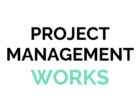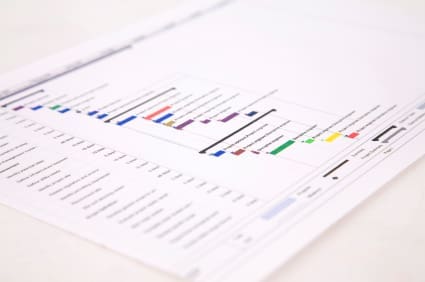Managing a project is not an easy task, no matter how skilled you are or what kind of project it is. There are lots of things that can go wrong in a project due to unexpected threats, time constraints, changing demands of clients/stakeholders, etc. That is why you should divide the project into manageable steps across the project life cycle with targeted goals and deliverables. Breaking a project into different phases makes it easier to control and more efficient.
When you are assigned a large project and feel overwhelmed, it’s better to re-visit the primary stages of the project life cycle.
According to the PMBOK, the definitive guide for those studying for the PMP Certification, a project’s life cycle consists of 5 different phases:
- Project Initiation
- Project Planning
- Project Execution
- Project Monitoring and Controlling
- Project Closing
Now, let’s look at each of them one by one and lay out a roadmap for your project.
Phase 1: Project Initiation
Project initiation refers to turning an abstract idea into a meaningful goal. In this phase, define the project on a broad level, and to do that, you need to understand the project’s end goals and create a project charter. A project charter is simply a document that consists of the crucial details like potential constraints, goals, budget, expected timeline, etc.
Once you have done that, it’s time to identify key personalities involved in the project. Now, create a register and mention essential details regarding these key personalities, like with whom you will communicate, who has the most influence, and who you will reach out to if any problem arises. A project charter does not necessarily contain the technical details but the details needed to initiate the project.
Phase 2: Project Planning
Project planning is the most important phase in a project lifecycle. This is where you lay out the project’s roadmap, so you can’t afford to make any mistakes here. Just to make it clear, Project Initiation & Project Planning both consume a lot of time.
In this phase, your primary task is to identify technical & nontechnical requirements, develop a project schedule, create a communication ladder, and set up deliverables.
The two most popular methods of setting up deliverables/goals are S.M.A.R.T. and C.L.E.A.R.
S.M.A.R.T Goals:
S.M.A.R.T stands for Specific, Measurable, Achievable, Relevant, Time-bound. This ensures that your goals are critically analyzed. This method also allows you to reduce risk and make clearly defined and achievable goals.
C.L.E.A.R. Goals:
CLEAR stands for Collaborative, Limited, Emotional, Appreciable, Refinable. Today’s businesses survive in a faster and agile environment and need flexibility and immediate results. The main idea behind C.L.E.A.R. goals is to make a collaborative environment where goals are limited, team members are emotionally connected, and goals are flexible to a great extent.
Phase 3: Project Execution
This is the stage where your team does the real groundwork. Your job as a project manager is to establish smooth workflows and monitor the team.
During this phase, you also need to stay collaborative with key stakeholders and team members and make sure that everyone is on the same page and everything is going smoothly.
You can also use different collaboration tools like Trello and Slack to make your work a little bit easier.
Phase 4: Project Monitoring & Controlling
In a project life cycle, Project execution, monitoring, and controlling run simultaneously to ensure that everything is going according to the planning. In this phase, you observe everything carefully and make corrections if something is not right.
During this phase, you track every minute detail to ensure that no one strays from the plan by establishing Critical Success Factors (CSF) and Key Performance Indicators (KPI).
Phase 5: Project Closing
Once you are done with the project, it’s time for the final closure. In the project closure, project managers review the entire project and make a detailed report covering every aspect. This phase also includes terminating the contracts with externally hired professionals, completing the necessary paperwork, and holding meetings to reflect upon the failures and successes.
Conclusion
So, that is how you divide your whole project in a lifecycle to ensure maximum returns out of the project. Managing a project is not an easy task; that is why it is important to divide it into different phases/stages across the project life cycle, which makes it easier to monitor, control, and meet goals.



